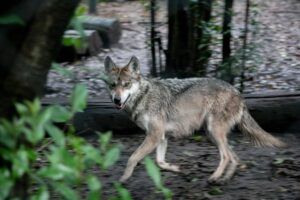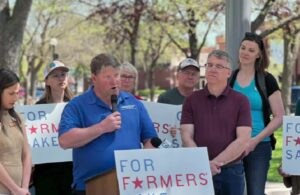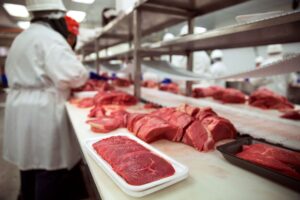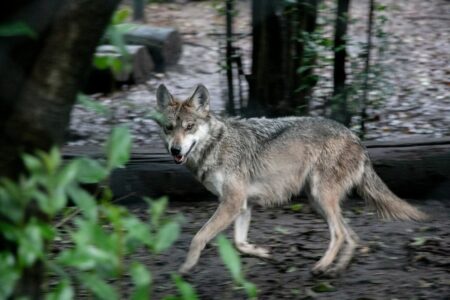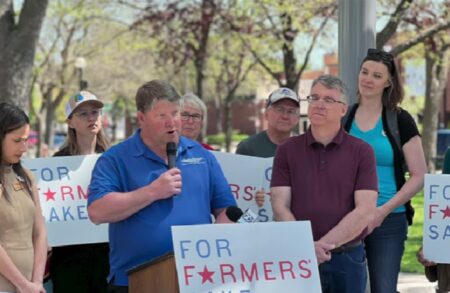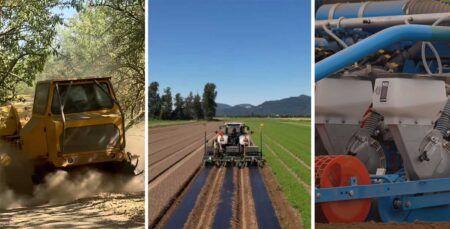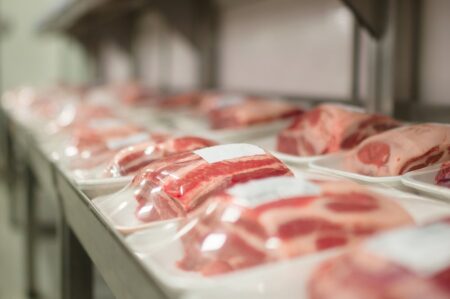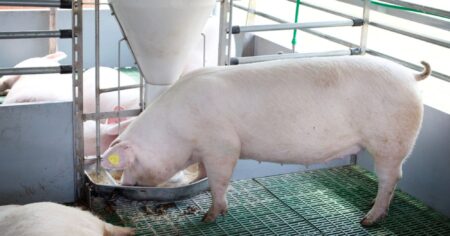By Cassandra Stephenson
Jack Daniel’s is terminating a decades-long program that provided the company’s corn byproduct “slop” to local cattle farmers at low or no cost, allowing the farmers to inexpensively feed their cattle.
The “Cow Feeder Program” is to end March 31, as the company transitions to a new partnership with Michigan-based Three Rivers Energy, which will convert the waste into renewable fuel and fertilizer.
The change has left farmers in and around south-central Tennessee’s Moore County reeling, searching for ways they might continue to earn a living through raising cattle.
Livestock makes up 89% of Moore County’s farm earnings, according to the most recent U.S. Census of Agriculture.
Danny Anderson, a 56-year-old cattle farmer, said his family has fed their animals the byproduct from Jack Daniel’s for decades. The slop is primarily water mixed with leftover distillers’ grain.
“I can remember when I was probably 8 or 9 years old, going with my grandfather to get it. … Back then, we hauled it in old milk cans,” Anderson said.
Anderson said when took over the operation of the 207-acre farm, he used a 1,000-gallon tank to retrieve the feed. He said he eventually upsized to a truck with a 4,000-gallon tank, paying less than $9 for each load.
He said he partnered with another Middle Tennessee cattleman, bulking up around 300–500 of his business partner’s cows while building his own herd of 130. They all ate slop, he said, supplemented with hay, salt and minerals.
“You’re talking about feeding 200, 250 head of cattle on $8 a day. There’s nothing else out there that compares,” Anderson said.
But Anderson said he will not be able to feed cows for his business partner after the program ends next year. The cost just won’t be feasible for either of them, he said.
He said he had been hauling about 185,000 gallons of slop each month. Starting in October, the company said it will reduce his allotment to 144,000 gallons. In January, it added, it will shrink to 43,200 gallons before cutting off entirely at the end of March.
Danny Anderson, Moore County farmer
I think Jack Daniel’s here in little old Lynchburg is getting a bad rep for it, because the people that run Jack Daniel’s here had to come out and tell the farmers, ‘Hey, look, this is over.’
— Danny Anderson, Moore County farmer
Anderson said he has sold 50 head of his cattle, plans to keep a herd of 50 cows, and feed them on a mix of grass, hay, and occasional feed mix during winter months. Moore County’s rough hillside land isn’t much good for anything but cattle farming, he said.
“That slop made it to where you could take a piece of land that wasn’t very valuable, and you could feed that slop, and you could make money doing it,” Anderson said.
Jack Daniel’s new partnership with Three Rivers Energy contractually requires the distiller to deliver 350,000–500,000 gallons of spent distiller’s grain each day — the company’s entire current volume.
“This decision follows years of careful consideration and was communicated with advance notice, starting with our initial announcement back in March 2022,” a Jack Daniel’s representative stated in an email to Tennessee Lookout. The partnership with Three Rivers Energy “allows us to achieve key environmental standards and secure the future of our brand, ensuring our continued ability to market and sell Jack Daniel’s globally.”
“We understand this change is significant, and we remain dedicated to our neighbors as we all adapt to this new era,” the representative stated.
Anderson said the decision to stop the program was made by Brown-Forman, Jack Daniel’s corporate owner.
“I think Jack Daniel’s here in little old Lynchburg is getting a bad rep for it, because the people that run Jack Daniel’s here had to come out and tell the farmers, ‘Hey, look, this is over,’” Anderson said.
What Happens Now?
The University of Tennessee Institute of Agriculture (UTIA) held a meeting last week to discuss potential paths forward for farmers who had relied on the slop as their primary feed source.
UTIA Livestock Marketing Specialist Andrew Griffith said while not all of the cattle in the Moore County area are eating slop, “the biggest percentage of them are.”
In the short term, Griffith said feed produced by a feed company is probably going to be the best bet for farmers, “mainly to be able to determine if it’s worthwhile for them to keep feeding cattle.”
“This way they won’t have some large investment … for infrastructure change,” he said.
Farmers can also continue to feed hay, and some may create their own feed blends of commodity crops like corn or soybean meal.
The economic viability of cattle farming is measured in the “cost of gain,” or the cost of feed for each pound of weight gained by the animal, Griffith said. It’s not simple to determine how much more it might cost a cattle farmer to feed their animals with purchased feed versus the slop because the costs of retrieving the slop includes time, gas, equipment, and other variables. Griffith, however, said it’s likely going to be more costly for farmers to feed alternative rations instead of the byproduct that was largely free to them.
Griffith said the change shows how important flexibility is in the agriculture business.
“Things can change, and if we’re not flexible or adaptable, that’s when we get left behind and lose out,” he said. “And certainly, in this case, there are going to be some people that don’t want to adapt, and maybe rightfully so. Maybe it’s best for them to not raise cattle anymore. But at the same time, if it’s your only business and you want to stay in it, you do have to have some flexibility and adaptability to stay in the business.”
Ripple Effects and National Context
Anderson said he expects the end of the program to have a “trickle-down effect on everything.”
Local livestock sale barns may struggle from less business when herds such as his shrink, he said. He said he’s looking at cutting some of his insurance policies on hay barns, tractors, and the feed trucks that will now sit idle. And he said he won’t be spending as much on fuel once the slop dries up; he currently puts about $400 in his big feed trucks every 21 days, he said.
And while the demand for beef is strong, the USDA reported a 1% drop in cattle and calves on feed for the U.S. slaughter market in September.
Agriculture Secretary Brooke Rollins said in September that the USDA is working on a plan to bolster the country’s beef herd, which is at its lowest inventory since 1951. But those plans focus on risk-mitigation tools and opening more working lands, and will not include payments to beef producers.
Griffith said while inventory is low, farmers today produce more beef per cow than they did even a decade ago.
“We have larger carcasses, larger frames, so we don’t need as many, but we do have a low cattle inventory relative to consumer demand for beef, and that’s why prices are so high,” he said.
Tennessee Lookout is an affiliate of States Newsroom, the nation’s largest state-focused nonprofit news organization, supported by grants and donations.


